7 Snow Cones and Other Types of Shaved Ice
There’s something extra refreshing about snow cones. Maybe it’s the crunch of ice or the sparkling tranquility; whatever it is, it’s almost like it makes the whole dessert cooler! Well, did you know that there is a whole world of shaved ice desserts? It seems as though any community that gained access to snow and ice almost immediately poured sweet liquid on it. Let’s take a look around the world at some of the beautiful ways you can enjoy this simple, fresh treat!
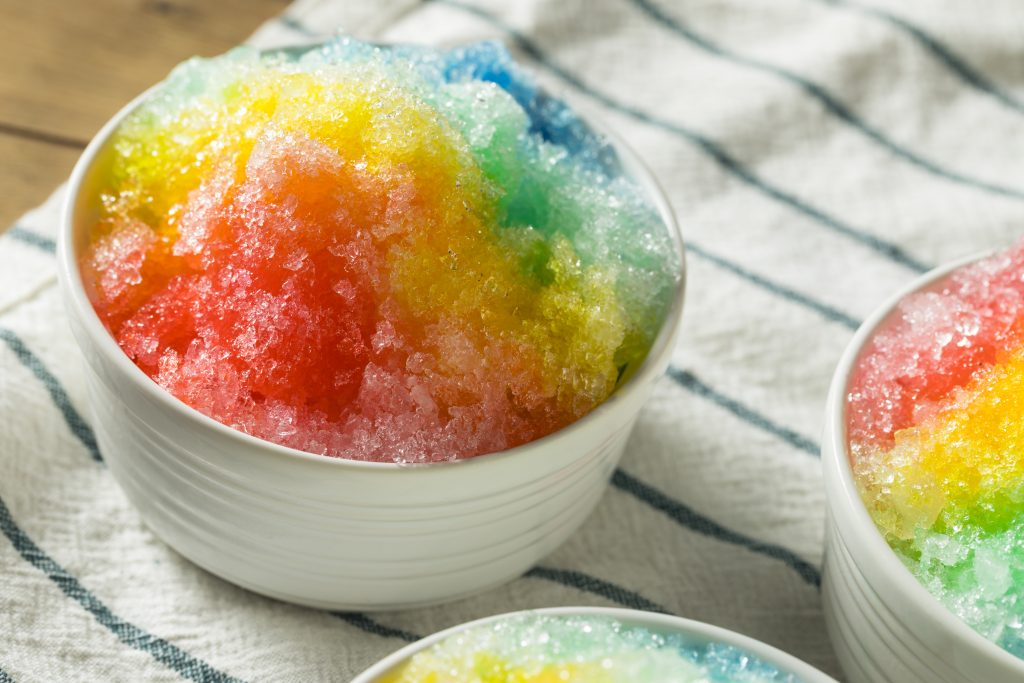
Where Do Snow Cones Come From?
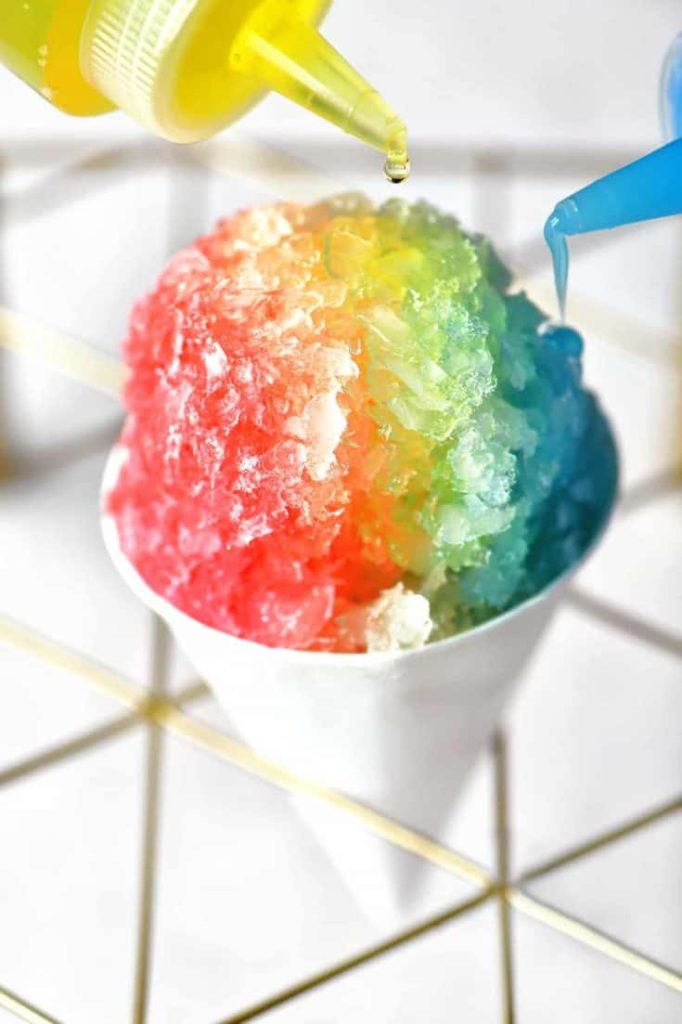
Different colours and flavours of syrup (The Gunny Sack)
Those delicious balls of crushed ice and fruit syrup have a long and delicious history. After the American industrial revolution had set in the 1850s, it became possible to transport ice around the United States. A tradition began in Baltimore where kids asked for ice shavings when an ice truck went by. So, parents started making fruit syrups to top the ice with. Snow cones became popular over the years in theatres, and eventually during the Great Depression as an inexpensive treat.
But the act of crushing and shaving ice for dessert goes much further back than the 19th century. Colonization of North America meant there were many cultures meeting in Baltimore back when those cones appeared. Some empires, like Rome, can even trace their snowy desserts all the way back to 27 BCE!
Shaved Ice From Around the World
Japan’s Kakigōri
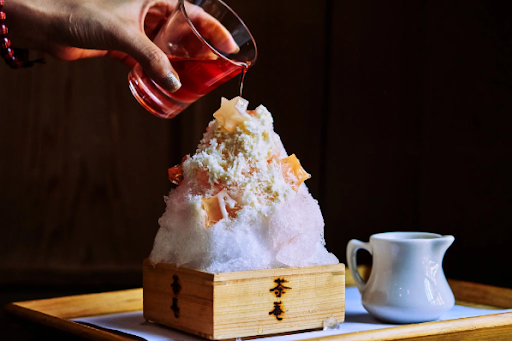
Pouring syrup on the fluffy shaved ice of kakigōri (The New York Times)
Kakigōri is one of the oldest known versions of shaved ice desserts. The first time it was recorded was in an 11th-century book by court poet, Sei Shōnago, in her zuihitsu book (diary of collected writings), The Pillow Book. Having ice in the hot summer months was a difficult feat, so only the aristocracy could afford to partake. The shaving of the kakigōri makes it fluffier than most ice desserts that crush the ice creating bigger ice crystals. As such, kakigōri isn’t as crunchy to eat as snow cones and better absorbs the syrups.
There are also different kinds of kakigōri. Shirokuma translates to “white bear” and is sweetened with condensed milk instead of fruit juices giving it a stark white colour. You’ll often have small pieces of mochi, fruit, and sweet bean paste on top and throughout shirokuma. The syrup in ujikintoki, another type of kakigōri, has a green tea flavour and colour. This version can also contain sweet bean paste.
Turkey’s Bici Bici
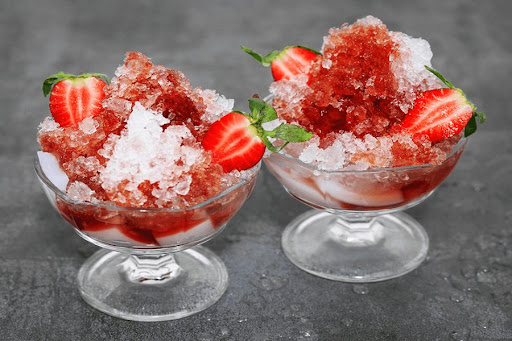
Homemade strawberry bici bici (Bite me Up)
Turkish bici bici’s ice is made a little differently in the world of shaved ice. Before freezing the water, it is thickened by boiling it with starch. Like the other desserts on our list, syrup is poured directly on top but then it is often accompanied by red fruits. Partially because of Turkey’s long and close history with roses, the most popular syrup for bici bici is rose-flavoured.
Rose has an immense amount of benefits, and has been cultivated in Turkey since the beginning of recorded history. Rose water has been used in Turkish food, perfume, religion, and medicine since at least the 11th century. There are references from around this same time to rose “şerbet.” It was (and is) a healing iced drink in many countries in South Asia, as well as in Turkey and Iran. It’s believed that şerbet came from the Iranian sharbat, which was essentially the same dessert. References to Turkish şerbet even track back to the origin of sorbet!
Hawaii’s Shave Ice
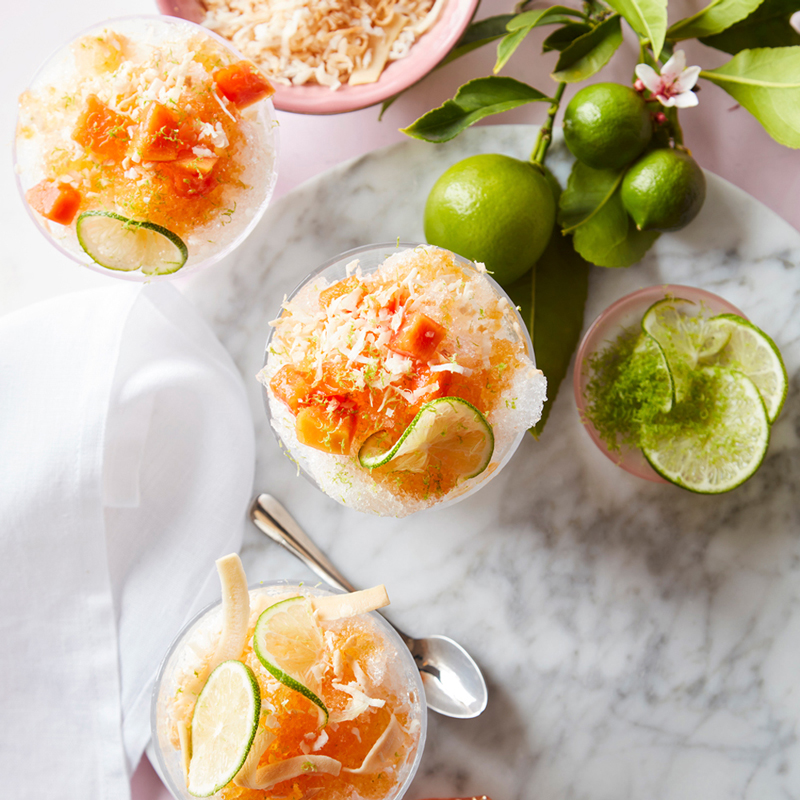
Papaya-lime Hawaiin shave ice (Williams Sonoma)
Shave ice is a popular dessert year-round in Hawaii. Like many shaved ice treats, it is based on kakigōri, the Japanese dessert that we mentioned earlier. This especially makes sense for Hawaii’s version of kakigōri because of its history with Japan. During the Meiji Restoration, Japan began industrialization and adopted Western ideologies in reaction to social changes and in search of resources. Many Japanese people immigrated around this time, as it was also around the time Hawaii was being colonized by the United States. They left in search of opportunities and were often employed in sugarcane plantations.
Although Hawaiian shave ice dessert was based on Kakigōri and shares the fine texture of the ice, it has become its own distinct dessert. Under the ice, you can find rich ingredients like red azuki beans, fresh Hawaiin fruits, and ice cream. Sometimes it is topped with mochi balls, li hing mui (salty dried Chinese plums) powder, and/or ice cream.
Canada’s Maple Taffy

Rolled up lines of Maple Taffy (tire d’érable) and snow at a Sugar Shack (Tango Photographie from Coup de Pouce)
The land of Canada has been home to a version of shaved ice dessert for a very long time. Tire d’érable, or maple taffy, is a sweet tree sap boiled past the point of syrup but before becoming sugar. However, it’s unique in our list, as it isn’t traditionally served on ice… it’s served on snow! Maple has been used by Indigenous Peoples in Northeastern Canada long before colonization. They used various forms of maple sap for medicine and because of its sugar content, the syrup was an effective preservative for meats. Many Peoples celebrate their appreciation for maple syrup during the maple full moon in March. The maple moon and maple syrup represent many different things in the unique and diverse languages of Indigenous Peoples in North America.
Of course, one of the irresistible lures of shaved ice tends to be how refreshing it is in the heat of summer, but maple taffy defies this norm! Its height is right between the end of winter and the beginning of spring. Although the romantic nature of fresh snow is appealing, instead many people will pour the thick taffy on crushed ice just for sanitary reasons. If you want to get the full experience of maple taffy, you can find it in sugar shacks (cabanes à sucre), especially in Quebec. To make this dessert, snow (or ice) is placed in a sort of trough with lines of syrup that you get to roll up on a popsicle stick into a flat mapley candy. You can experience a lot of French Quebecois culture at these “cabanes à sucre” including the cuisine, music, hospitality, and maple syrup desserts. Embrace the snow with the snowiest of treats!
Peru and Bolivia’s Shikashika

A typical point of sale of Shikashika (Raspadillas) (JPM Industrias)
The name of shikashika comes from the Amerindian Quechua people of South America, but it is called raspadilla (in Spanish). It’s actually named after the sound that it makes; it’s an onomatopoeia (the sound dictates the name of the word). Shikashika has a long history in South America, and to this day follows similar practices.
Authentic shikashika ice comes from glaciers in Peru and Bolivia. It’s extracted with an axe and by hand, and then transported by mule. Some communities even have ice harvesting as the main natural resource for their economy. The ice is a very special part of this traditional dessert and then it is topped with either honey, milk, or in-season fruit juice.
Mexico’s Raspado
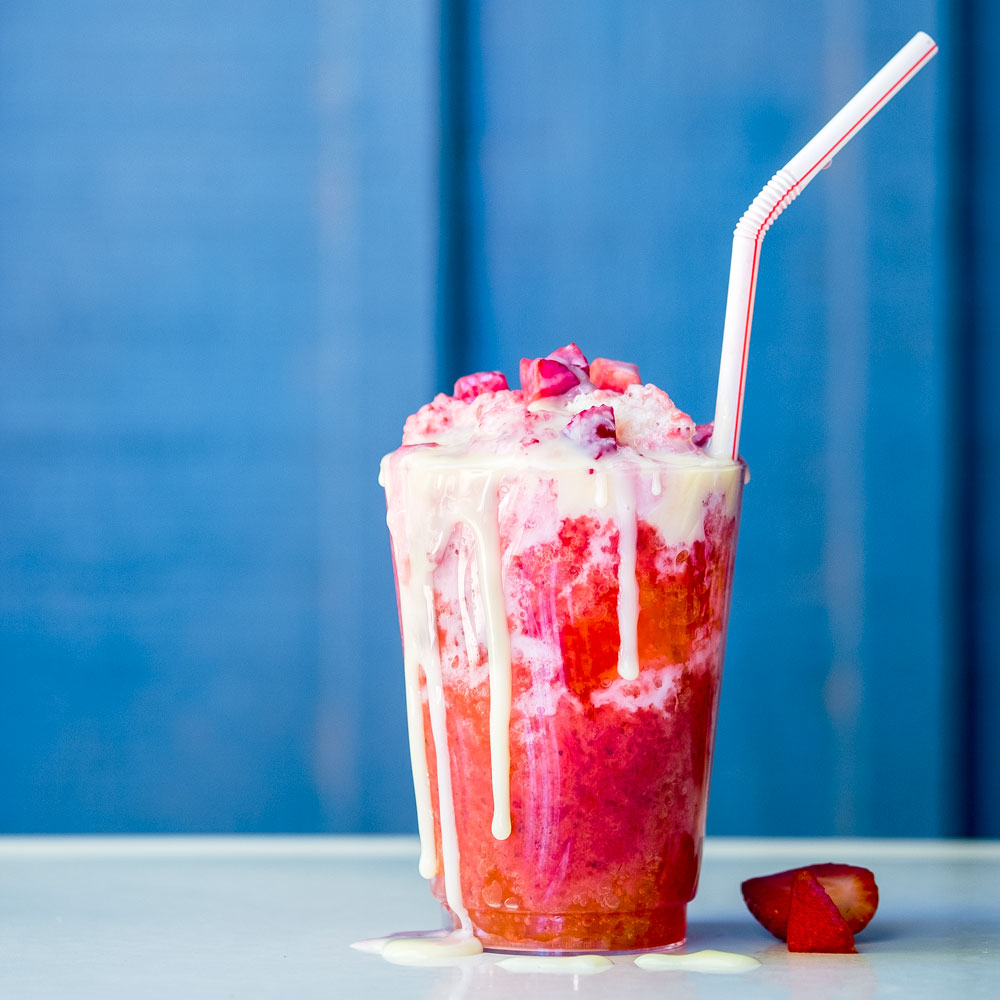
Strawberries and Cream Raspado (My Recipes)
Raspado is known by many names depending on where you are in Mexico, including granizados, yuki, raspa and yaguata. The crunch of the crushed ice is similar to that of snow cones and makes it a fun and satisfying treat to have in the summer heat. Like the other ice-shaved desserts on this list, the plain ice is topped with sweet fruit juice. It is then usually topped with the fruit that the juice is made of.
Raspado actually dates back to pre-Columbian times in Mexico when snow was brought to the tlatoanis (rulers) from the highest mountains and topped with honey and fruits. Many raspado vendors will be mobile, like on a pushcart or bike. The selection of flavours varies from place to place, but strawberry, lemon, hibiscus, and mamey fruit (an indigenous fruit to Mexico and Central America that looks like mango inside and cantelop outside) are very popular.
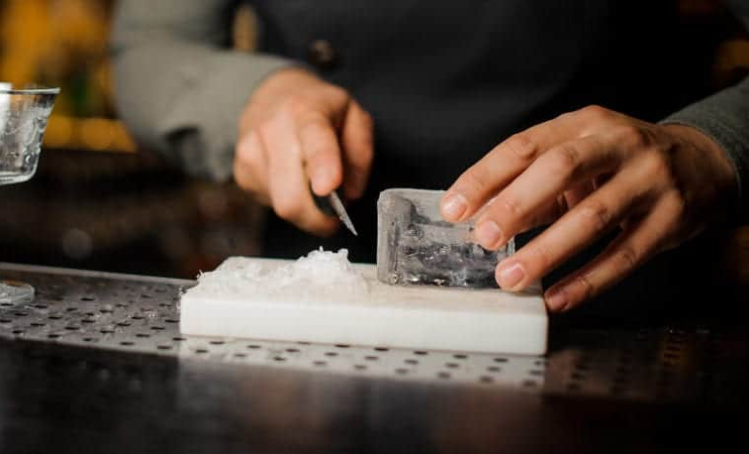
The many ways of shaving ice result in different textures (Happy Shave Ice)
It’s cool to see such similar desserts coming from so many different places that are so far away! Everyone was really onto something it seems. Whether you’re feeling overheated or even cold in the Quebec woods, grab snow cones or a dessert with some shaved ice near you!




